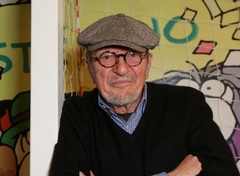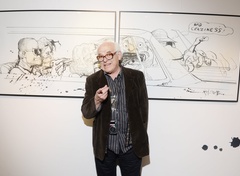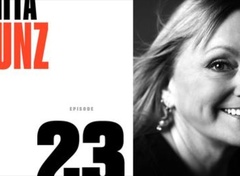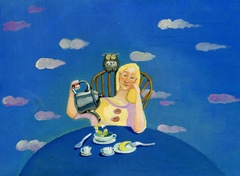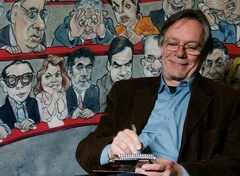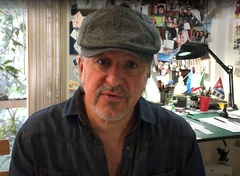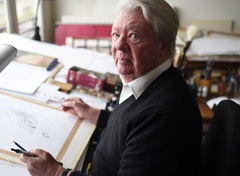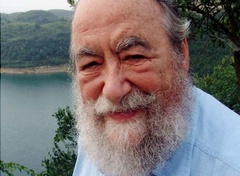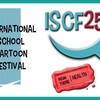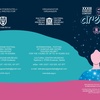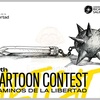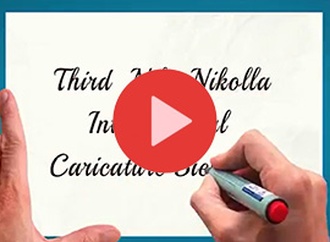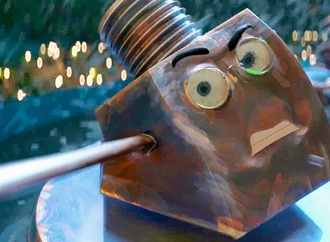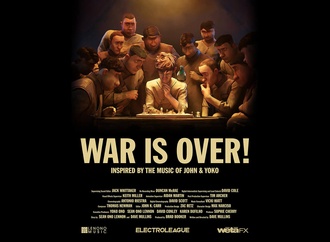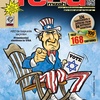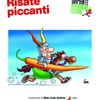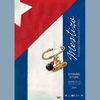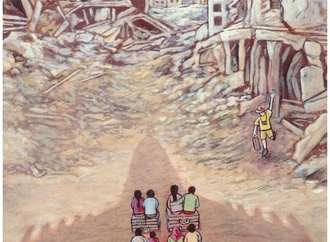Marco De Angelis was born in Rome, Italy, in 1955. He is professional journalist, cartoonist, illustrator and graphic designer.
Journalist of the daily La Repubblica, he have been published from ’75 on over 150 dailies and magazines in Italy, Europe and USA: Il Popolo (from ’79 to ’97), Il Messaggero, La Repubblica, Metropoli, Il Mattino, Grazia, Gialli Mondadori, Panorama, Lavorare, Help!,Travaso, Marc’Aurelio, Washington Post, Los Angeles Times, Chicago Tribune, Vancouver Sun, Tampa Tribune, Herald Tribune, Courrier International, Le Monde, Nebelspalter, Eulenspiegel, Jez, Feferon, Szpilki, etc.
CartoonArts International and The New York Times Syndicate distribute around the world many of his editorial cartoons.
His works are published also in many websites and in the review online Buduàr.
He is Illustrator of many children’s books for important publishers like Giunti, De Agostini, La Scuola, San Paolo, Lapis, European Language Institute (28 reviews in 30 Countries). As graphic designer he had many collaborations with important associations, companies, RAI TV and TeleMontecarlo televisions.
He won over 70 awards (16 First prizes): Golden Palm in Bordighera (’97), Prize Council of Europe (’78 and ’90), S. Valentino (2005), Istanbul, (’87), Tehran, Tokyo, Krusevac, Amsterdam, Belgrade, Skopje, Bjelovar, Galati, Montreal, Ottawa, Olen, Paris, Pistoia, Pescara, Chieti, Città di Castello, Dolo, Trento, Fano, Genova. Two books with his illustrations was awarded with two important prizes in Italy. Member of juries and editor for Italy of Witty World. His works are exposed in museums of Tolentino, Skopje, Istanbul, Tehran, Stockholm, Boca Raton and others.
What was your first satirical cartoon?
I’ve realized cartoons since I was a kid, but I can remember my first strictly satirical work as a cartoon I did when I was 17 years old for the Bordighera International Saloon of Humour in Italy, in ’72. It was the first exhibition I participated at, and the theme was pollution and degradation of the historical city of Venice.
When did you start your professional working?
I published my first cartoons in 1975 when I was 20 and a College student. In the following years I kept collaborating with many magazines, but I started my real professional work in 1980, when I became a journalist and the official editorial cartoonist for the daily newspaper Il Popolo, in Rome.
What was your first published artwork?
My first published cartoon was a little comic about the Rome underground on a humour magazine.
What was your first prize?
It was the “Press Prize” in 1975 at the Saloon of Bordighera, but my first “1st prize” was the “1st Prize for the strips” in an international exhibition in Pescara (Italy) in 1976.
What was your last prize?
The last prize I won is the 3rd Prize for the best cartoon about Europe, published on the Italian newspapers, in the Festival of the magazine “Internazionale”, in Ferrara, 2014.
How do you find new ideas?
I read a lot of newspapers, magazines, books. The news are the fundamental resource to find ideas for the satirical cartoons but also for generic themes, for gag cartoons. Now all the media can give us a big number of inspirations.

What’s your idea about Inevitable Similarities?
In these years there are a great number of debates about similar cartoons. Many ideas are similar, of course, because the themes are recurring: war, peace, pollution, society, etc.
Condemning all artists isn’t right. Many of them have in fact similar ideas, at the same time even if in opposite sides of the World. It’s although important for all the authors to truly check if the idea is truly an original one… Even if checking the whole web, catalogues and magazines could be a hard task indeed.
What do you think about plagiarism?
A similarity can either be a mere coincidence or a way to exploit the same idea in different ways. I think that plagiarism can be intended only when the idea is perfectly identical (I myself have been often a victim of plagiarism). However, some cases are still questionable: plagiarism must be stigmatized, but it’s increasingly becoming some sort o f a “Witch Hunt” nowadays.
Do you think who is the best Iranian Cartoonist?
I love the art of Kambiz Derambakhsh, for his graphic synthesis and his original ideas.
Who is the best Cartoonist in your country?
I have got no particular preference: there are many very good cartoonist, with different styles, but I don’t think I could pick one who fully towers above all.

Do you think who is the best foreign cartoonist?
I don’t think it would be possible to consider an author the absolute best, because each one among the best artists in the World are to remember for their own particular skills. I think that two of them, at the moment, are Vladimir Kazanewsky and Angel Boligan.
What's the best cartoon that you've ever seen?
If possible send it to us.
I remember a simple, poetic, but wonderful cartoon of the great Cheval: a turtle walking slowly carrying on its shell a slug with a happy face, with the antennas folded back by the wind. I’m sorry but I couldn’t find a copy.
It can be considered a good example of how drawings can be simple but give a precise idea of the relativity of things.
How much time do you pay for creating an artwork?
It depends from the news of the day, or the general themes. A good half of the day is the time I spend for my creation, but sometimes it can only take a couple of hours.
What are your tools and technique for creating artwork?
I realize my artworks on drawing papers, with Indian ink, watercolours and pastels. Nib and brush are my best friends.

Which software do you use?
The technique is manual, but I use the computer mainly to correct or clean up my work after scanning them. Nowadays it’s important to have a high resolution and high quality copy of the original work, realized on paper.
What's your recommendation to your colleagues?
I think it’s important that this job doesn’t lose the old handcrafted tradition, and that artists try not to rely only on a computer. The risk that can be taken is some sort of similarity among all different styles.
What do you think about cartoon situation in the world?
It’s a different situation depending on the Country: in many nations the economic and social situation of the press is better than in other ones, and so also the cartooning situation is positive. However, in other Nations it isn’t always possible to have a safe profession as a cartoonist. The general economic crisis is a big obstacle and the Web has now created a situation of anarchy for the matter of using copyrighted works, with many rights violations out of control. On the other side, the freedom of expression is ever more menaced by the intolerance, as we’ve seen the dramatic terroristic episodes of this year, or censorship procedures by autoritary governments.
What was your best cartoon?
This choice is really hard, but if I should pick one my mind runs to the cartoon I won the First Prize in Simavi Cartoon Competition in Istanbul, in 1987. A drawing in black and white about politicians and voters.
I really love also the work that won the Golden Palm in Saloon of Bordighera in Italy, in 1992. It’s a dramatic cartoon but still effective today, when wars and refugees are still an actual problem.

Have you ever created an immediate Cartoon?
Yes , many times, for some daily newspapers when the news arrive at the last hour before the printing, or in occasion of exhibition for the public.
Have you ever been jury member in any Cartoon Contest?
I have been a jury member in some juries in Italy and abroad, in Legnica, Bordighera, Tolentino, Fano, Rome, etc.
What about Caricature?
I like the caricature art, the artists ability to realize portraits in a humoristic version, interpreting the soul of the subject. I myself have realized many caricatures but only for the editorial cartoons, with the protagonists of the political life, always in a humor scene.
Have you ever worked in cooperation with another artist?
It has occurred only for few times when I was young, at the beginning of my career, with an author of comics who put the words in the balloons and I realized the drawing.

What's your idea about Irancartoon website?
Irancartoon website is a very good open eye on the world of humour and satire, very useful to have news about exhibitions and more.
If you were born again what did you choose as your career?
Well, I think that I would pick this profession again, but maybe with a little different choices. Or an astronaut.
Do you think whats the border between Cartoon and Caricature?
Cartoon is an interpretation of reality, or a comment, or a funny tale realized in a single image, with or without words. The caricature is the interpretation physiognomy of a person instead, sometimes with a political or psychological analysis.
What and when was your last exhibition?
My last exhibition was in the city of Lucca (Italy)on the theme of the Devil, in July. Instead my last solo exhibition will be on during the next weeks near Florence, Tuscany, in the city of Le Piastre.
What's your description about cartoon?
Cartoon is a single shot of an humoristic idea, with or without words, realized with an elaborated or a simple style… But always with a single sharp message straight to the mind and the hearth.
Do you think an artist can have enough money by creating cartoon and caricature?
I think that the creation of cartoons can be a hobby but also a job. If the author makes his artworks as a journalistic graphic commenter, or like an illustration for some magazine, I think it should be rewarded with sufficient money. This is my job, then I think it’s a right being payed for my creations.
Who's your favorite artist except in cartoon world?
In the art world I love René Magritte, for his dreamlike and surreal view of life and the world around us. I also really do like pre-Raphaelite artists such as Dante Gabriele Rossetti.
What was the last book you've read?
I like novels but also historical books. The last book I red is the story of the Transcontinental Railroad in the West “Hear that lonesome whistle blow” of Dee Brown. This book will be useful for a future work that I’m preparing.
Do you think humor can be learned?
Not exactly: not all have born with the sense of humor, sadly, but it’s possible to learn this simple mechanism thanks to the people or the place where we are living, from the studies or the readings we make.
What's your idea about Black Humor?
I like very much black humour, it’s a necessity in order to defend ourselves from the darkest news or some fears that gasp us like the one of death.

Who is the best artist in Black Humor?
I think he’s the French humorist Claude Serre, with a fine graphic style and a very hard black humor can be found in his series of cartoons, like “Humour Noir & Hommes en Blanc”.
Another good example that can be easily found is the book “Idées Noires”, by Franquin. Very different from his usual style, but still a little gem that is not very known to the public.
What was your last performed Caricature?
A portrait of Fidel Castro smoking a sickle and hammer-shaped Habana cigar, which is burning out completely.





